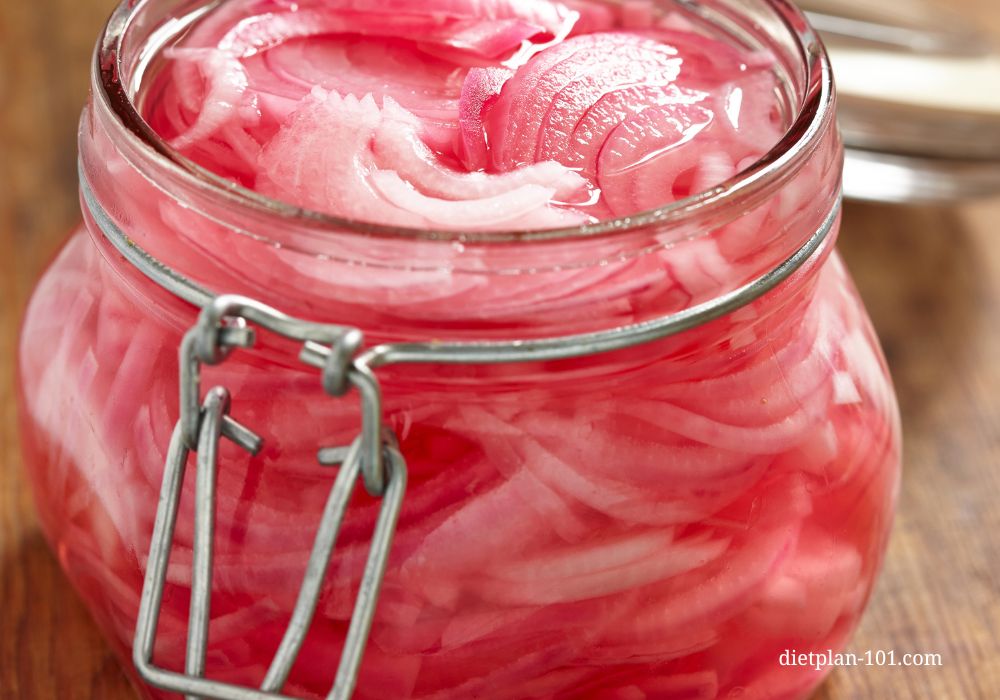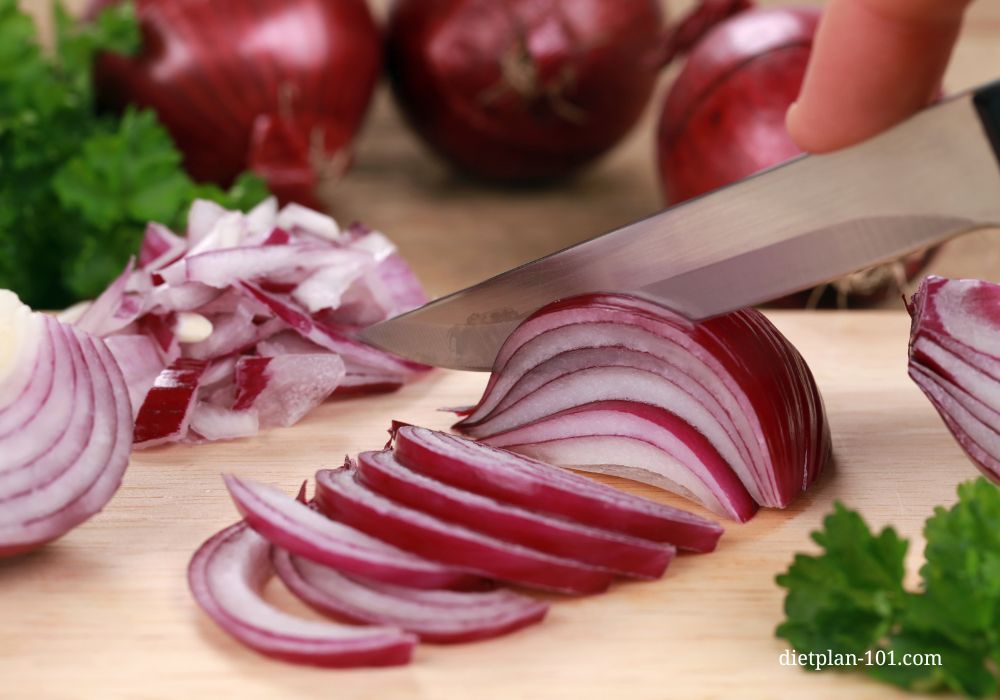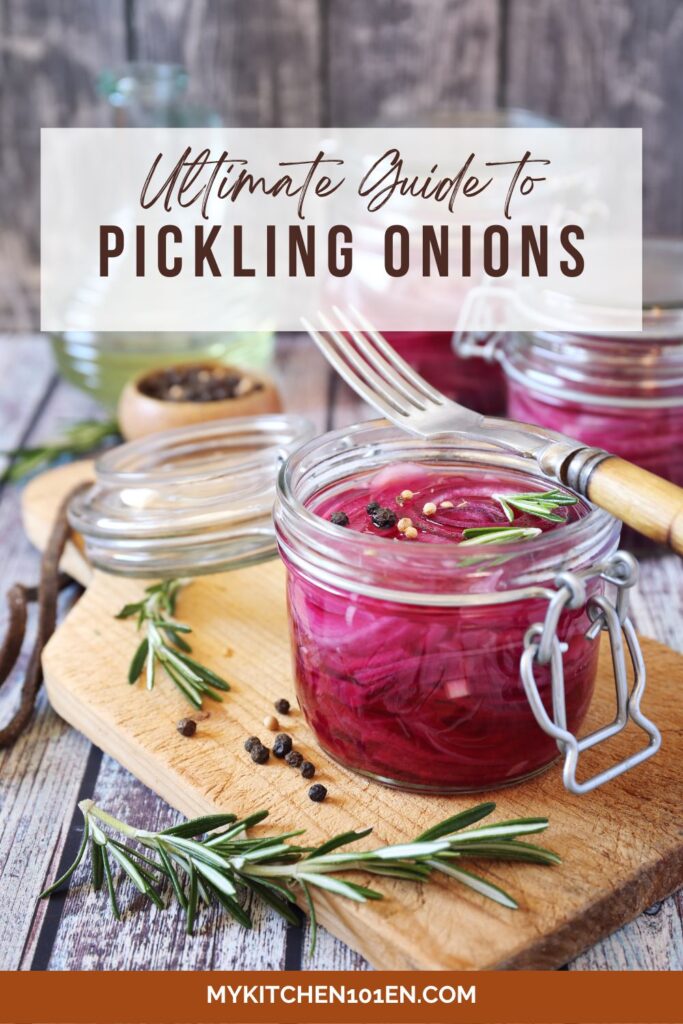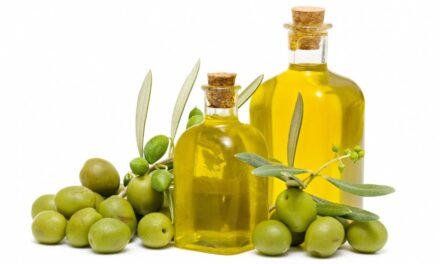Table of Contents
If you’ve ever tasted a tangy, crunchy pickled onion, you know there’s something special about this delightful condiment.
Pickling onions at home can be fun and rewarding, it allows you to experiment with flavors and create a unique treat to enjoy or share with friends and family.
In this guide, we’ll explore the basics of pickling onions, share techniques, and tips, provide mouthwatering recipes, and even delve into some creative uses.
Making pickled onions is simple! You just need vinegar, water, a bit of sugar, and spices. Thinly slice red onions for a tasty homemade snack.
The Basics of Pickling Onions
Selecting the Right Onions is the first and foremost important step
- Types of onions suitable for pickling: The best onions for pickling are small varieties like pearl onions, cocktail onions, or shallots. However, you can also pickle larger onions like red, white, or yellow, as long as they’re sliced thinly.
- Quality and freshness: Choose firm onions with tight, dry skins and no signs of mold or soft spots. The fresher the onions, the better the flavor and texture of your pickled onions will be.
Preparing the Onions for Pickling
- Cleaning and peeling: Rinse the onions under cold water to remove any dirt, and then peel off the outer skin. For small onions, you can trim the root end and blanch them in boiling water for 1-2 minutes to make peeling easier.
- Slicing techniques: For larger onions, slice them thinly into rings or half-moons. Smaller onions, like pearl onions, can be pickled whole or halved.
Essential Onion Pickling Ingredients
- Vinegar like white vinegar, apple cider vinegar, or white wine vinegar is commonly used for pickling. You may experiment with different types to find the flavor you prefer.
- Use pickling or kosher salt if possible as they don’t contain additives that can cloud the brine or affect the flavor.
- Granulated sugar or brown sugar can be added for sweetness. Adjust the amount based on your preference.
- Popular pickling spices include mustard seeds, black peppercorns, coriander seeds, and allspice. Fresh herbs like dill, thyme, and rosemary can also enhance the flavor.
Onion Pickling Techniques and Tips
- Quick pickling onion methods: This method involves boiling vinegar, water, salt, and sugar, then pour the hot brine over the onions in a jar. Let them cool to room temperature before refrigerating. Quick pickled onions are ready to eat within a few hours but develop a better flavor after a day or two.
- Traditional pickling: This slower method involves packing onions into jars with vinegar, salt, sugar, and spices, then allowing them to ferment at room temperature for several days to weeks. Traditional pickling can produce more complex flavors but requires more patience.
- Canning pickled onions: To ensure a longer shelf life, you can process pickled onions in a water bath canner. This method seals the jars and allows you to store them in a cool, dark place for several months.
- Troubleshooting common issues: If your pickled onions become mushy or discolored, make sure you’re using fresh onions and the right amount of salt. Try not to overcook the onions or use iodized table salt.
- Tips for perfecting texture and flavor: Experiment with different kinds of vinegar, herbs, and spices to find your favorite flavor combination.
How can I make my pickled onions crunchy?
To ensure your pickled onions maintain their crunch, follow these tips:
- Use fresh onions: Choose fresh, firm onions with no visible signs of spoilage or soft spots. Fresh onions will have a natural crunch that will be preserved during the pickling process.
- Slice onions evenly: When preparing your onions, make sure to slice them evenly. The consistent thickness helps the onions pickle uniformly and maintain their crunch.
- Blanch onions (optional): Blanching onions before pickling can help preserve their crunchiness. To blanch, simply immerse the sliced onions in boiling water for 30 seconds to 1 minute, then transfer them to an ice bath to stop the cooking process. Drain and pat the onions dry before pickling. By doing so, you set the texture of the onions, making them more resistant to softening during the pickling process.
- Use cold pickling liquid: When pouring the pickling liquid over the onions, ensure that it has cooled to room temperature or is slightly warm. Pouring hot liquid over the onions can cause them to soften and lose their crunch.
- Don’t over-pickle: Over-pickling onions can result in a soft texture. For quick pickling methods, an hour or two in the refrigerator should suffice. For traditional pickling, check the onions after a few days to make sure they have the desired crunchiness.
By following these tips, you can ensure that your pickled onions maintain their satisfying crunch throughout the pickling process.
Pickled Onion Recipes
In this section, we’ll explore a variety of mouthwatering pickled onion recipes that cater to different tastes and preferences. Whether you enjoy the classic tangy flavor, crave a spicy kick, or prefer a touch of sweetness, these recipes have something for everyone.
Each of the recipes below highlights unique combinations of vinegar, spices, and herbs that will elevate your pickling experience and inspire you to create your own signature pickled onions.
- Classic pickled onions: Combine white vinegar, pickling salt, sugar, and a blend of mustard seeds, black peppercorns, and coriander seeds for a timeless favorite.
- Spicy pickled onions: Add sliced jalapeños, red pepper flakes, or crushed dried chilies to your pickling brine for a spicy kick.
- Sweet pickled onions: Use a higher ratio of sugar, or try adding a touch of honey or maple syrup to your brine for a sweeter variation.
- Balsamic pickled onions: Swap out white vinegar for balsamic vinegar to create a rich, slightly sweet pickled onion with a unique depth of flavor.
- Beer pickled onions: Use a malty beer, such as an amber ale, in place of some of the vinegar for a distinctive, robust flavor.
- Gourmet variations and flavor combinations: Experiment with different herbs and spices like rosemary, thyme, cinnamon, or star anise to create your own signature pickled onions.
Creative Uses for Pickled Onions
Pickled onions are versatile and can add a burst of flavor and crunch to various dishes. Here are some creative ways to incorporate pickled onions into your meals:
- Appetizers and snack ideas: Serve pickled onions alongside a cheese and charcuterie board, or skewer them with olives and pickles for a tasty hors d’oeuvre.
- Sandwich and burger toppings: Layer pickled onions on your favorite sandwich or burger for a tangy, crunchy addition.
- Salads and side dishes: Toss pickled onions into salads or grain bowls for an extra burst of flavor and texture.
- Onion Vinegar Dressing: Combine onion vinegar with olive oil, honey, and a pinch of salt and pepper for a unique salad dressing that brings a pleasant tanginess to your greens.
- Incorporating pickled onions into main dishes: Add pickled onions to tacos, pizzas, or stir-fries for an unexpected twist on traditional dishes.
- Pickled onion garnishes for cocktails and mocktails: Use pickled onions as a garnish for Bloody Marys, martinis, or even a refreshing cucumber mocktail.
- Onion Vinegar Dipping Sauce: Mix some onion vinegar with soy sauce, minced garlic, and a touch of honey or sugar to create a delicious dipping sauce for dumplings, spring rolls, or grilled meats.
How to Store and Preserve Your Pickled Onions
Proper storage techniques: Store quick pickled onions in airtight jars in the refrigerator for up to a month. Canned pickled onions can be stored in a cool, dark place for several months.
Shelf life and freshness: Check for signs of spoilage, like mold or off odors, before consuming. If properly stored, quick pickled onions can last for up to a month in the refrigerator, while canned pickled onions can last up to a year.
Gifting homemade pickled onions: Package your pickled onions in attractive jars with personalized labels and gift them to friends and family as a thoughtful, homemade treat.
Health Benefits of Pickled Onions
Nutritional value: Onions are a good source of vitamins C and B6, as well as antioxidants like quercetin, which can help reduce inflammation and promote overall health.
Probiotic properties: Traditional pickling methods can create a probiotic-rich environment, which may help support a healthy gut microbiome.
Digestive benefits: The fiber and prebiotics found in onions can aid digestion and promote gut health.
The Bottom Line
Now that you’re equipped with the ultimate guide to pickling onions at home, it’s time to start experimenting and creating your own delicious recipes.
Not only will you have a tasty condiment to enjoy, but you’ll also be reaping the health benefits of these tangy treats. Don’t forget to share your pickling adventures and favorite recipes with us! Happy pickling!
Related read: Green chilli pickle – make your own pickled green chilies with our easy-to-follow guide.
Frequently Asked Questions about Pickling Onions
What types of onions are best for pickling?
The best onions for pickling are small varieties like pearl onions, cocktail onions, or shallots. However, you can also pickle larger onions like red, white, or yellow, as long as they’re sliced thinly.
How long do pickled onions last?
Quick pickled onions can last up to a month in the refrigerator, while canned pickled onions can last up to a year when stored in a cool, dark place.
What type of vinegar should I use for pickling onions?
Common vinegar used for pickling onions includes white vinegar, apple cider vinegar, and white wine vinegar. Experiment with different types to find the flavor you prefer.
How do I prevent my pickled onions from becoming mushy?
To keep your pickled onions crunchy, try adding a grape leaf or a pinch of alum to the jar. Also, make sure you’re using fresh onions and the right amount of salt. Overcooking the onions or using iodized table salt can cause mushiness.
Can I adjust the sweetness or spiciness of pickled onions?
Yes, you can easily adjust the sweetness by modifying the amount of sugar or using alternative sweeteners like honey or maple syrup. For spiciness, add more or fewer spicy elements such as jalapeños, red pepper flakes, or crushed dried chilies to the pickling brine.
Are there any health benefits to eating pickled onions?
Pickled onions are a good source of vitamins C and B6, as well as antioxidants like quercetin. Traditional pickling methods can create a probiotic-rich environment, which may help support a healthy gut microbiome. Additionally, the fiber and prebiotics found in onions can aid digestion and promote gut health.
What dishes can I use pickled onions in?
Pickled onions can be used in a variety of dishes, such as appetizers, sandwiches, burgers, salads, grain bowls, tacos, pizzas, and stir-fries. They can also be used as garnishes for cocktails and mocktails.
Are pickling onions just small onions?
While pickling onions are typically small, it is possible to use larger onions for pickling as well. To pickle larger onions, you would need to slice or chop them into smaller pieces, such as rings or wedges, before pickling. This allows the pickling liquid to penetrate the onions effectively, ensuring a good flavor and texture.
What onions are best for pickling?
The best onions for pickling are pearl onions, shallots, cipollini onions, and white or yellow onions (sliced or chopped). These varieties offer a good balance of firm texture and mild to moderate flavor, which works well for pickling.







